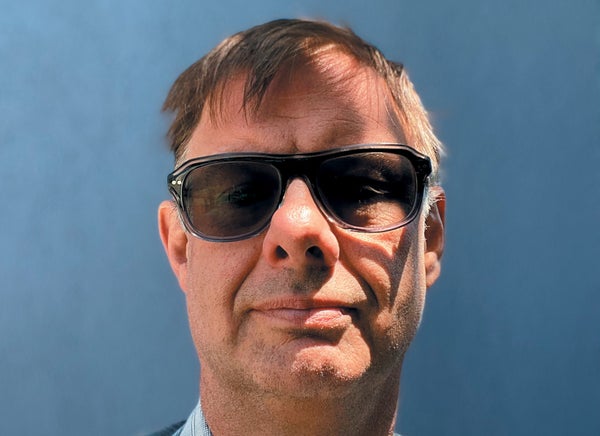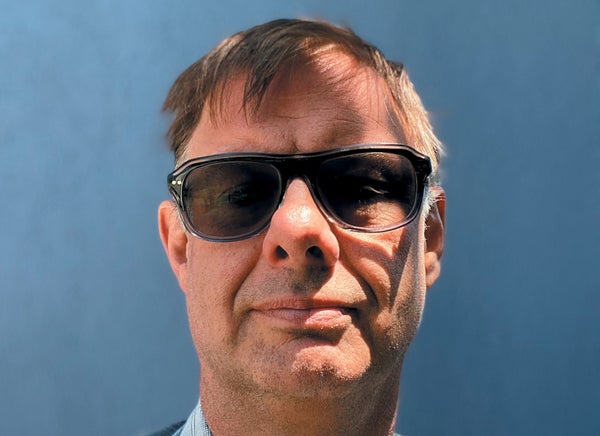Contributors to Scientific American’s May 2024 Issue
Writers, artists, photographers and researchers share the stories behind the stories

Stephen Pyne
Life in the Pyrocene
The summer after his high school graduation, Stephen Pyne filled an empty spot on the Grand Canyon’s North Rim fire crew. The opportunity came through “complete serendipity,” he says, and he went on to serve a total of 15 summers on the crew, 12 as the boss. On a fire crew, “you quickly find that fire organizes your life,” he says, just as it organizes all life on Earth.
For this issue, Pyne, an environmental historian, tells a story of the so-called Pyrocene, a term he coined in 2015 in “an attempt to summarize everything I’ve learned” about fire’s intimate relationship with humanity. He has written nearly 30 books on the subject but has struggled throughout his career to find an academic home for his fire-focused work, which didn’t fit cleanly into one department. The subject “was never taught, certainly not at the places where I went to school.” For Pyne’s part, though, he sees fire as an aspect of biology—“a creation of the living world and dependent on the living world.”
On supporting science journalism
If you’re enjoying this article, consider supporting our award-winning journalism by subscribing. By purchasing a subscription you are helping to ensure the future of impactful stories about the discoveries and ideas shaping our world today.
Kevin Cooley
Life in the Pyrocene
In the 1960s Kevin Cooley’s mother lost her Los Angeles home in a wildfire. “She talked about ‘before the fire’ and ‘after the fire,’” recalls Cooley (above). In that way, fire has always been present in his life—plus, he was “a little bit of a pyromaniac” as a kid. Now a photographer based in L.A., he has made fire one of his central subjects. He began by shooting wildfires, and then, in 2013, he was inspired by the Vatican enclave’s smoke signals to create his own blazes in controlled environments. His work can involve explosions, flares, drones, laser beams and copious amounts of smoke.
Cooley is a “big fan” of Stephen Pyne’s books about fire’s relationship to humanity. So when Scientific American asked Cooley whether he would be interested in creating work for Pyne’s feature on the Pyrocene, he thought, “Are you kidding me? Is there anything I’d be more interested in?” For the project, Cooley worked with a fire-breather for the first time, a military veteran named Kavan O’Toole. The experience made him want to incorporate people with this uncommon skill into future projects. “I was like, wow, this is a whole different conversation. I’m going to work with [fire-breathers] some more.”
Joanne Silberner
A Healthy Dose of Quiet
Until recently, Joanne Silberner lived near a highway in Seattle. “When we bought the house, [the highway] wasn’t that loud,” she says. But as its surface deteriorated, it became “loud enough that we couldn’t have a conversation in the backyard.” So Silberner, a multimedia journalist covering medicine and health policy, moved across Puget Sound to Bainbridge Island, where it’s quiet enough to hear the coyotes and the harbor seals calling at night. “It’s made such a difference in my quality of life,” she says. “I didn’t realize how anxious the sound was making me.”
In her article, Silberner covers the deleterious and understudied effects noise can have on our health. Despite clear evidence of the harms of excessive noise—which are borne primarily by disadvantaged communities—noise pollution is barely regulated, leaving people to “suffer without any kind of government intervention,” she says.
Throughout her career, Silberner has been guided by a quote from journalist Amy Goodman: “Go where the silence is and say something.” For this story, Silberner found the directive particularly apt: “There’s not much public awareness of the health effects of noise.”
Amanda Montañez
Graphic Science
Amanda Montañez has always preferred creating observational art based on the world around her over drawing solely from her imagination. As a studio art major in college, “I always loved figure drawing the most,” she says. After working in the art world for a few years, Montañez decided to go to graduate school for medical illustration. During her master’s research project, which communicated to pregnant people how to navigate midwifery care, she “was just kind of struck by how important data visualization is,” especially in helping people understand their health-care options. That ultimately led Montañez to Scientific American, where she’s been a graphics editor over the past nine years.
In this issue’s Graphic Science column, Montañez charts how family sizes are shrinking across the world. The story “hit fairly close to home,” she says. Montañez grew up with her grandparents—who lived on the other side of her family’s duplex—as “built-in babysitters.” Now with a young child of her own, she finds herself without family nearby to help with day care. In coming decades, she says, “a lot more people are going to be where I am.”

